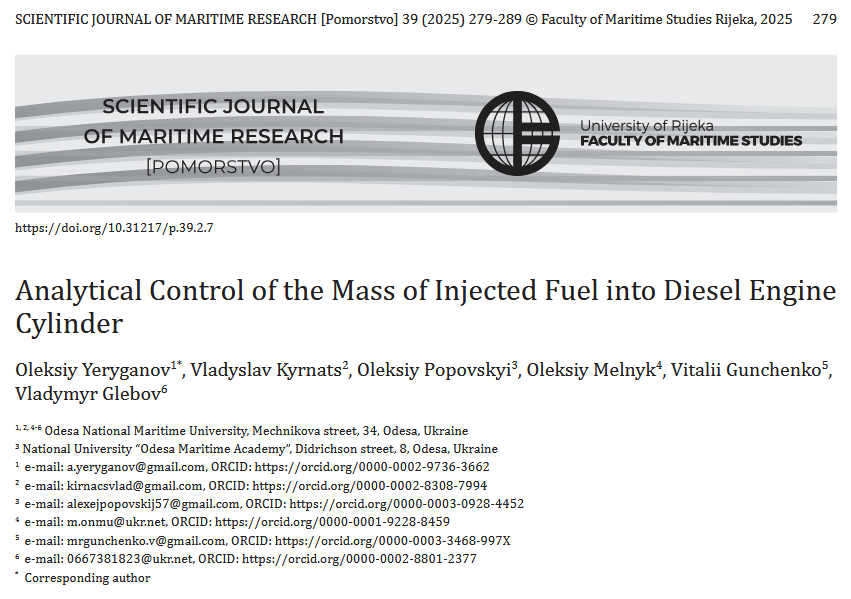Analytical Control of the Mass of Injected Fuel into Diesel Engine Cylinder
Keywords:
Indicator diagram, Sabaté cycle, Mass of injected fuel, Thermodynamic equationsAbstract
In real operating conditions, the engine indicator diagram is the most common source of data for analyzing its current technical condition. Despite this, it is not possible to determine all diagnostic parameters directly from it, for example, the mass of fuel injected into the cylinder. To determine the fuel supply, it is possible to use the calculation of heat release in the cylinder or by solving a system of differential equations describing the working process in the cylinder. However, in those cases, the approximate value of the average temperature of the cylinder walls is unknown, as well as which of the empirical formulas for calculating the heat transfer from the gases to the cylinder walls should be used. Therefore, an additional method for calculating the mass of fuel injected into the cylinder was developed, in which the actual working process, under certain assumptions, was represented by a calculated cycle with isochoric and isobaric sections of fuel combustion. As a result, two systems of algebraic equations were compiled, the solutions of which can be used to find the mass of injected fuel. During the research, the process of solving equations was modernized, which allowed for a significant increase in accuracy.

Downloads
Published
Issue
Section
Categories
License
Copyright (c) 2025 Oleksiy Yeryganov, Vladyslav Kyrnats, Alexey Popovskyi; Vitalii Gunchenko, Vladymyr Glebov, Oleksiy Melnyk

This work is licensed under a Creative Commons Attribution-NonCommercial-NoDerivatives 4.0 International License.
Scientific Journal of Maritime Research understands the need for authors to disseminate and maximize the impact of their research. When submitting an article for publishing in Scientific Journal of Maritime Research, it implies that the Corresponding Author transfers, with the consent of all Coauthors, the copyright ownership in the referenced submission, including all versions in any format now known or hereafter developed, to the Scientific Journal of Maritime Research.
Copyright protects your original work and research material and prevents others from using it without your permission. Others will be required to credit you and your work properly, thus increasing its impact. Should your submission be rejected or withdrawn prior to acceptance for publication by Scientific Journal of Maritime Research, this transfer will be null and void.
Authors, users or readers of an article need clear instructions on how they can use the article. Scientific Journal of Maritime Research uses the Creative Commons Attribution-NonCommercial-NoDerivatives (CC-BY-NC-ND) 4.0 International License, which governs the use, publishing and distribution of articles by authors, publishers and the wider general public.
The authors are allowed to post a digital file of the published article, or the link to the published article (Scientific Journal of Maritime Research web page) may be made publicly available on websites or repositories, such as the Author’s personal website, preprint servers, university networks or primary employer’s institutional websites, third party institutional or subject-based repositories, and conference websites that feature presentations by the Author(s) based on the published article, under the condition that the article is posted in its unaltered Scientific Journal of Maritime Research form, exclusively for non-commercial purposes.




